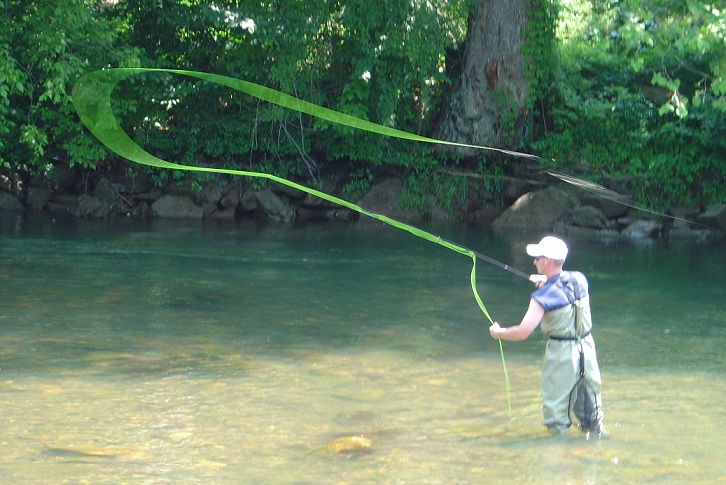
Targeting smallmouth bass with the fly rod is becoming more and more popular and I thought I’d go over what you might need to get started smallmouth fishing on the fly.
Smallmouth Bass Fishing Tips
What kind of fly rod should I use for bass?
The important features for a good “bass” fly rod are adequate weight and responsiveness to throw heavy flies a good distance. With that being said, I recommend a 6 to 8 weight rod of 8.5′ or longer. My favorite all around fly rod is a 9ft. 8-weight. Not only is it great for our big river fish like the smallmouth, Pike, and carp but it can double as a perfect tool for Lakes Ontario and Erie tributary Steelhead and trophy sized brown trout. Your rod should have a strong tip to help pick up the large heavy flies used in smallmouth bass flyfishing and a medium butt-section to blend with the wind-resistant bulky popper and deer hair bugs used in largemouth bass fishing.
What kind of Reels should I use?
Reels should be appropriately sized to allow for 75 to 150 yards of Dacron (or similar) backing and 80 to 90 feet of flyline. Our bass can make hard runs that will take your reel into the backing line, although it is not that common. You need not buy an expensive fly reel. Most of the time, the reel merely holds your excess line and has no serious application in casting a flyrod. However, the key to a good reel is to have a good smooth drag system capable of applying solid pressure to wear down a fighting fish. That is paramount!
What kind of fly line should I use?
Floating – Most fishing situations on the river call for a floating line which when properly cleaned, allow for easier line control, mending of line, and are also easier to cast.
Sinking – Sinking lines have their uses, especially for trying to dredge up sulking fish in deeper pools and runs but they will be a hassle in most of the river. A more practical line set-up uses mini-sink tips which can be removed and replaced more easily and when combined with a split-shot or two makes a very flexible way to fish the whole river. Usually the “weight” of your fly rod is balanced with the same weight of a fly line. For example: My 8 weight fly rod has an 8 weight-forward flyline.
What kind of Leaders and Tippet should I use?
Our river smallmouth bass are big strong fish for a flyfisherman. The flies I pitch out to them are equally large. I tend to normally use sizes 2/0, 1/0, 2, and 1. (One may find example pictures of the flies I use at www.jjsjigs.com) Leaders in sizes 1x or 2x help to turn over large flies and are absolutely necessary when it’s windy. Nylon tippets are used more than Fluorocarbon, but the higher abrasion resistance of Flourocarbon makes it ideal for big fly streamer fishing especially with the tendency of these fish to use rocky debris as available cover. I will always recommend using the heaviest tippet possible given the conditions to increase your chances of landing these strong fish. Shorter leaders of 5′ to 9′ are the most useful lengths when fishing big flies. Source
This is some great advice from Dave Pelachick. Be sure to visit his article for the fishing report in the North Brach area of the Susky and Northeast, PA.
For the best book ever on smallmouth fly fishing, you’ve got to check this out…for real 😉
Fly-Fishing for Smallmouth: in Rivers and Streams
If you are a fly fisherman who fishes for smallmouth bass, please leave your feedback about your preferences and any smallmouth bass fly fishing tips that you may have.
Subscribe to our newsletter to stay up to date on all the latest smallmouth bass news.


